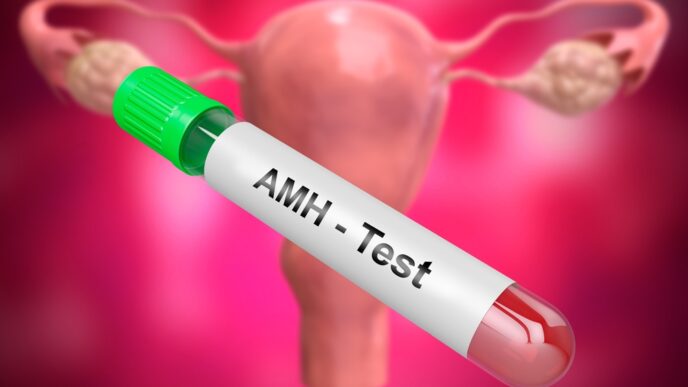WORDS PANK JIT SIN
Think you have heard everything there is to know about type 2 diabetes? Given the ongoing research on this disease, it is very likely that there is some latest news that you may have missed out on. Last November 2018, medical experts from all over the world gathered in Kuala Lumpur for the 12th International Diabetes Federation Western Pacific Region (IDF-WPR) Congress and 10th Asian Association for the Study of Diabetes (AASD) Scientific Meeting. We are fortunate to be among the attendees, and we are pleased to share with you four important updates that were discussed during these events.
| Dr Martalena br Purba
Dietitian |
UPDATE 1: PLANT-BASED DIET SUPPORTS BETTER BLOOD GLUCOSE CONTROL AND IMPROVES OVERALL HEALTH
Plant-based proteins and a balanced diet can help in diabetes management.
The increase in consumption of calorie-dense foods which include fast foods, meats and other animal fats, as well as highly-refined grains and drinks loaded with refined sugar, are dietary choices contributing to the rising rates of obesity around the world.
As most people know by now, diabetes is closely linked to obesity and type 2 diabetes is more prevalent among people who eat more fat and animal-based foods.
A LOW-FAT PLANT-BASED DIET IS LINKED TO MANY BENEFITS
Didn’t your parents tell you to eat your vegetables? They may not have told you the reasons, but studies have shown that populations eating a plant-heavy, low-fat diet have less risk of heart disease, hypertension, type 2 diabetes, osteoporosis, kidney stones and gallstones; lower death rates from heart conditions, fewer intestinal disorders, and less incidence of certain cancers.
Not necessarily vegetarian
Plant-based diets here are not necessarily vegan or vegetarian in nature, but rather rich in plant- based foods. Animal proteins can be replaced with plant proteins such as tempeh and other soy- based products and legumes. Carbohydrates can come from fruits, vegetables and nuts while calcium and other nutrients can be sourced from dairy and eggs.
DIETARY GUIDELINES FOR PLANT-BASED DIETS
The American Diabetes Association (ADA) and the US Academy of Nutrition and Dietetics (AND) recently recommended a well- balanced, plant-based diet as part of diabetes nutrition. These guidelines recommend carbohydrates intake from legumes, whole grains, vegetables and dairy products, with an emphasis on nutrient-dense, high-fiber, low-glycaemic load foods. In short, plant-based diets are consistent with these diets.
Plant-based diets are indirectly beneficial for blood sugar control because they contain less saturated fatty acids. When taken over a long term, plant- based diets result in lower free- fatty acid levels and lesser fat accumulation thus leading to a reduction in diseases associated with free fatty acids, which includes heart failure, metabolic syndrome, and more.
| Professor Lee In-Kyu
President of Korean Diabetic Association Department of Internal Medicine Kyungpook National University Daegu, South Korea |
UPDATE 2: DIABETES IS LIKELY TO INCREASE THE RISK OF CANCER
According to current scientific research, it seems to be true. Type 2 diabetes is closely linked to obesity and obesity increases the risk for cardiovascular diseases (which includes mainly heart disease and stroke), muscle and bone diseases; and cancers. Obesity related cancers include breast, endometrial, ovarian, colorectal, pancreatic, renal, liver and gallbladder cancer.
Although the reasons for this link have not been thoroughly identified, it is thought to be related to hyperinsulinaemia (excess insulin), hyperglycaemia (high blood sugar) and inflammation. On a more scientific note, there’s a link between energy metabolism of our cell’s powerhouse, the mitochondria, and how it’s altered in cancer cells. This alteration is induced by starvation, nutrient deficiency, long-term high-fat diets and can be found in patients with obesity and diabetes.
According to the American Institute for Cancer Research, after smoking avoidance, maintaining a healthy weight is the most important thing we can do to prevent cancer. Our National Health and Morbidity Survey states that as of 2016, 30 percent of Malaysians are overweight and 17.7 percent of them are obese. This means 30 percent of the population are at increased risk of the cancers listed above.
WHAT CAN WE DO TO REDUCE THE RISK?
The answer seems quite universal. A healthy diet, physical activity and weight management – the core of a healthy lifestyle – not only improve type 2 iabetes outcomes, but also reduce the risk of cancer.
Some diabetes drugs are associated with reduction in cancer risk. Metformin, for example, is a first-line drug in the treatment of type 2 diabetes. The drug has been around for many years and is widely used on its own or in combination with other antidiabetic medications. Metformin use has been linked to lower risks of cancer, and a study in 2010 revealed that it could lower the risk by up to 30 percent.
Insulin, on the other hand, has a somewhat volatile reputation, with some studies linking it to an increased risk of cancer while some claim it does not raise any cancer risks. However, the benefits of insulin use in type 2 diabetes far outweigh its cancer risk, which is minimal, if any. Cancer risk should not be a major factor in choosing between available diabetes therapies for the average patient. Only for selected patients with very high risk of cancer occurrence or for recurrence of specific cancer types, should these issues require more careful consideration.
Patients should seek appropriate cancer screenings as recommended for their age and sex ie, colon and prostate cancer for men above 50.
| Dr Andrea Ban Yu-Lin
Consultant Respiratory Specialist Head of Respiratory Unit Universiti Kebangsaan Malaysia Medical Centre |
UPDATE 3: OBESE OR OVERWEIGHT PEOPLE WITH DIABETES ARE PRONE TO HAVE OBSTRUCTIVE SLEEP APNOEA, WHICH SHOULD BE TREATED.
OSA: NOTHING TO DO WITH THE OFFICIAL SECRETS ACT!
Obstructive Sleep Apnoea (OSA) is a dangerous condition which is expected to affect more people in the near future, in tandem with the obesity epidemic. This makes it necessary for effective and acceptable treatment options to be available.
OSA is a condition where a person stops breathing frequently during his or her sleep. This results in interrupted sleep and subsequently a host of other diseases. Diagnosis is a challenge as the current criteria requires overnight monitoring of sleep-disordered breathing. This means a person suspected of OSA will need to register to a sleep clinic and have special monitoring equipment (a polysomnography) fixed on him or her. As can be expected, the diagnosis itself can be expensive.
Lack of sleep is associated with excessive daytime sleepiness and an increase in workplace and driving accidents. Sleep fragmentation also affects glucose balance in the body and in rats, this leads to increased fat deposition, insulin resistance and hyperglycaemia via increased cortisol and oxidative stress.
There’s more! OSA is also associated with increased risk of hypertension (high blood pressure), atrial fibrillation (uneven heartbeat) and even stroke! In other words, OSA is a recognized independent risk factor for cardiovascular and metabolic disorders.
WHAT ARE THE RISK FACTORS?
OSA is more common in males with a prevalence of 24% versus only 9% in women. It is thought that men tend to store more fat around the neck, hence the increased likelihood of airway blockage which is responsible for snoring and intermittent stoppage of breathing.
WHAT ARE THE AVAILABLE TREATMENT OPTIONS?
Sleep on your side. As the soft tissue at the back of the throat is responsible for blocking one’s airway, sleeping on the side or belly may help alleviate sleep apnoea. Lose weight! As obesity is one of the main causes of snoring and OSA, it makes sense that by losing weight, one would be able to rectify the problem. A 10% weight loss predicts a 26% reduction in apnoea-hypopnoea index (a measurement of the severity of sleep apnoea). Conversely, a 10% increase in weight is associated with a six-fold increase in chances of developing moderate-to-severe OSA.
There’s a machine called the continuous positive airway pressure (CPAP) which forces low pressure air into the nose at night to help with breathing and to prevent hypoxia. The downside of this treatment is some persons may not like the discomfort of having a mask over their face as they sleep. A newer version called the bilevel positive airway pressure (BiPAP) machine works in the same fashion.
Should all else fail, surgery is also an option. Various surgical therapies are available, and these should be discussed with a specialist. Among available procedures are radiofrequency ablation, mandibular advancement, palatal implants and tracheostomy.
AS OBESITY IS ONE OF THE MAIN CAUSES OF SNORING AND OSA, IT MAKES SENSE THAT BY LOSING WEIGHT, ONE WOULD BE ABLE TO RECTIFY THE PROBLEM.
| Associate Professor Barakatun Nisak Mohd Yusof
Department of Nutrition and Dietetics Universiti Putra Malaysia |
UPDATE 4: A DIET HIGH IN FAT AND/OR LOW IN CARBS MAY NOT NECESSARILY BE BENEFICIAL
WHAT’S THE RATIONALE BEHIND LOW-CARB DIETS FOR PEOPLE WITH T2DM?
Carbohydrates in the diet raise blood sugar levels, and because diabetes is defined by high blood sugar levels, it makes sense to minimize carbohydrates in the diet.
A high-carbohydrate diet leads to constantly high blood sugar levels, which in turn leads to a constant high demand of insulin. As a result, cells in the body become insulin resistant. The positive feedback loop creates an environment in the body where high glucose and high insulin levels circulate in the blood but due to insulin resistance, the person is still hungry.
What’s high and what’s low?
- Low-fat diets are usually synonymous with high carbohydrate content, while a very-low-carbohydrate diet is synonymous with high-fat or high-protein (ketogenic) content.
- A very-low-carbohydrate or ketogenic diet only allows for 5% to 10% of daily energy intake to come from carbohydrates.
- A low-carbohydrate diet consists of less than 26% carbohydrates.
- Moderate carbohydrate diets range from 26% to 45% carbohydrates.
- A typical Asian diet consists of 45% to 60% carbohydrates. In the Asian context, a high-carbohydrate diet is one that consists of more than 65% carbohydrate intake.
We’ve heard many people talk about the benefits of low-carbohydrate diets. The evidence seems to swing from one end to another. BUT DO LOW-CARB DIETS REALLY WORK?
According to a study named PURE, which was published in 2017, the intake of high carbohydrate was associated with a higher risk of mortality. The study found that fat intake had no effect on cardiovascular disease or death.
Later in 2018, the Atherosclerosis Risk in Communities (ARIC) study revealed a U-shaped association between percentage of energy from carbohydrate and all-cause mortality. What this means is if too little (less than 40%) or too much (more than 70%) of our daily diet is from carbohydrates, the risk of death increases.
SOUNDS LIKE SOMETHING WE’VE HEARD BEFORE?
Yes, balance is the key. The ARIC study found that carbohydrate intake of between 50% and 55% of daily energy intake pose the least risk in terms of deaths. Also, definitions of moderate intake differ in Asian and Western settings, as Asians take more carbs in general.
But wait! The type of protein and fat plays a role, too. The type of non-carbohydrates ie, the fats and proteins consumed as part of the daily dietary intake also plays a big role in determining the risk of death. For instance, if the bulk of protein and fats come from animal sources then there is an increased risk of death.
Conversely, if the bulk of protein and fats are derived from plant and unsaturated sources then they become beneficial for health, and thus, result in a reduced risk of death.











